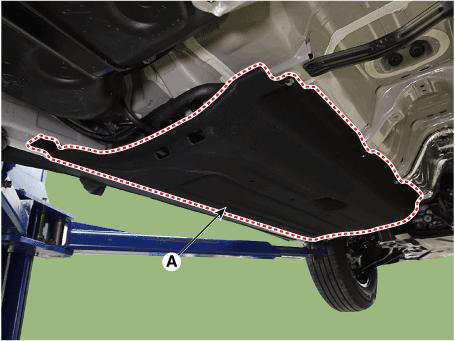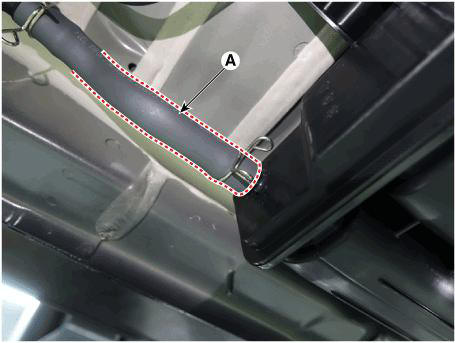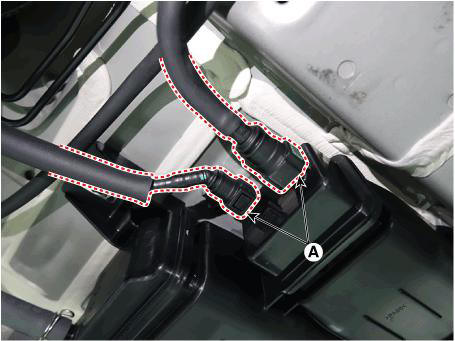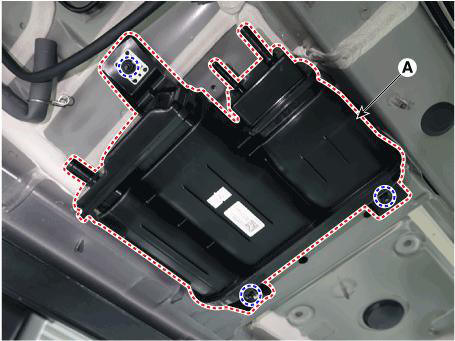Hyundai Tucson: Evaporative Emission Control System - Removal
Hyundai Tucson - Fourth generation (NX4) - (2020-2023) - Workshop Manual / Emission Control Syste / Evaporative Emission Control System / Evaporative Emission Control System - Removal
Removal
WARNING
- Be careful not to damage the parts located under the vehicle (floor under cover, canister, fuel tank) when raising the vehicle using the lift.
(Refer to General Information - "Lift and Support Points")
- Turn the ignition switch OFF and disconnect the battery (-) terminal.
- Remove the floor under cover (A).
Tightening Torque : 7.9 - 11.8 N*m (0.8 - 1.2 kgf*m, 5.8 - 8.7 lb*ft)

- Separate the ventilation hose (A).

- Disconnect the vapor hose quick-connector (A).

- Remove the canister (A) after loosening the mounting nuts.
Tightening Torque : 7.8 - 11.8 N.m (0.8 - 1.2 kgf.m, 5.7 - 8.7 lb-ft)

READ NEXT:
 Evaporative Emission Control System- Installation
Evaporative Emission Control System- Installation
Install in the reverse order of removal.
Inspection
Check for the following items visually.
Cracks or leakage of the canister
Loose connection, distortion, or damage of the vapor hose/tube
Canister→ Atmosphere
Caniste
 Exhaust Emission Control System - Description
Exhaust Emission Control System - Description
Exhaust emissions (CO, HC, NOx) are controlled by a combination of engine
modifications and the
addition of special control components.
Modifications to the combustion chamber, intake manifold, camshaft and ignition
system consist the
basic
SEE MORE:
 Rear Cross-Traffic Collision-Avoidance Assist (RCCA)
Rear Cross-Traffic Collision-Avoidance Assist (RCCA)
Rear Cross-Traffic Collision-Avoidance
Assist is designed to help detect vehicles
approaching from the left and right side
while your vehicle is reversing, and warn
the driver that a collision is imminent
with a warning message and an audible
w
 Oil Hydraulic Motor (Actuator) Inspection Procedure
Oil Hydraulic Motor (Actuator) Inspection Procedure
Removal
Remove the coupling assembly.
(Refer to 4 Wheel Drive (4WD) System - "Direct Electro Hydraulic Actuator
Coupling")
Keep going perpendicular state after remove the coupling assembly.
WARNING
Keep going perpend
Information
- Home
- Hyundai Tucson - Fourth generation (NX4) - (2020-2023) - Owner's Manual
- Hyundai Tucson - Fourth generation (NX4) - (2020-2023) - Workshop Manual